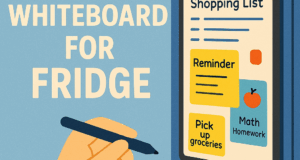How to Write on a Digital Whiteboard: A Comprehensive Guide
Digital whiteboards have revolutionized the way we collaborate, teach, and present ideas. Whether you’re in a classroom, a boardroom, or working remotely, mastering the art of writing on a digital whiteboard can significantly enhance your productivity and communication. In this guide, we’ll explore the essentials of using a digital whiteboard effectively, from basic techniques to advanced tips.
Understanding Your Digital Whiteboard
Before diving into writing techniques, it’s crucial to familiarize yourself with the features of your digital whiteboard. Most digital whiteboards come with a variety of tools, including pens, highlighters, shapes, and text boxes. Some advanced models even offer features like handwriting recognition and real-time collaboration. Take the time to explore the interface and understand how to switch between tools and colors.
Basic Writing Techniques
Using the Pen Tool
The pen tool is the most fundamental feature of a digital whiteboard. To use it effectively:
- Select the Pen Tool: Click on the pen icon in the toolbar.
- Choose a Color and Thickness: Adjust the settings to suit your needs.
- Start Writing: Use your finger, stylus, or mouse to write on the board. Practice smooth, deliberate strokes for clarity.
Erasing Mistakes
Mistakes are inevitable, but digital whiteboards make it easy to correct them:
- Select the Eraser Tool: Click on the eraser icon.
- Erase Specific Areas: Click and drag over the content you want to remove.
- Clear the Entire Board: Look for a “Clear All” or “Delete” button to start fresh.
Advanced Features and Tips
Using Shapes and Templates
Digital whiteboards often come with pre-designed shapes and templates that can save time and improve organization:
- Insert Shapes: Use the shape tool to add circles, squares, arrows, and more.
- Apply Templates: Choose from a variety of templates for flowcharts, mind maps, and timelines.
Text Input and Formatting
Adding text is a crucial aspect of digital whiteboard usage:
- Insert Text Boxes: Click on the text tool and click anywhere on the board to start typing.
- Format Text: Adjust font size, color, and style to make your text stand out.
Collaboration Tools
Many digital whiteboards support real-time collaboration, making them ideal for team projects:
- Invite Participants: Share a link or invite colleagues to join your session.
- Use Multiple Cursors: See where each participant is working in real-time.
- Save and Share: Export your work as an image or PDF for future reference.
Best Practices for Effective Use
Keep It Organized
A cluttered whiteboard can be confusing. Use grids, sections, and color-coding to keep your content organized and easy to follow.
Practice Regularly
Like any skill, writing on a digital whiteboard improves with practice. Spend time experimenting with different tools and techniques to become more proficient.
Engage Your Audience
When using a digital whiteboard for presentations or teaching, engage your audience by asking questions, encouraging participation, and using interactive features.
Troubleshooting Common Issues
Lag or Delayed Response
If your whiteboard lags, check your internet connection or close unnecessary applications to free up resources.
Unclear Writing
If your writing appears messy, try using a stylus for more precise control or increase the thickness of your pen tool.
Difficulty Navigating the Interface
Refer to the user manual or online tutorials for your specific whiteboard model to learn more about its features and functionalities.
Conclusion
Writing on a digital whiteboard is a valuable skill that can enhance your ability to communicate and collaborate effectively. By understanding the tools, practicing regularly, and following best practices, you can make the most of this versatile technology. Whether you’re a teacher, a business professional, or a remote worker, mastering the digital whiteboard will undoubtedly elevate your productivity and creativity.



